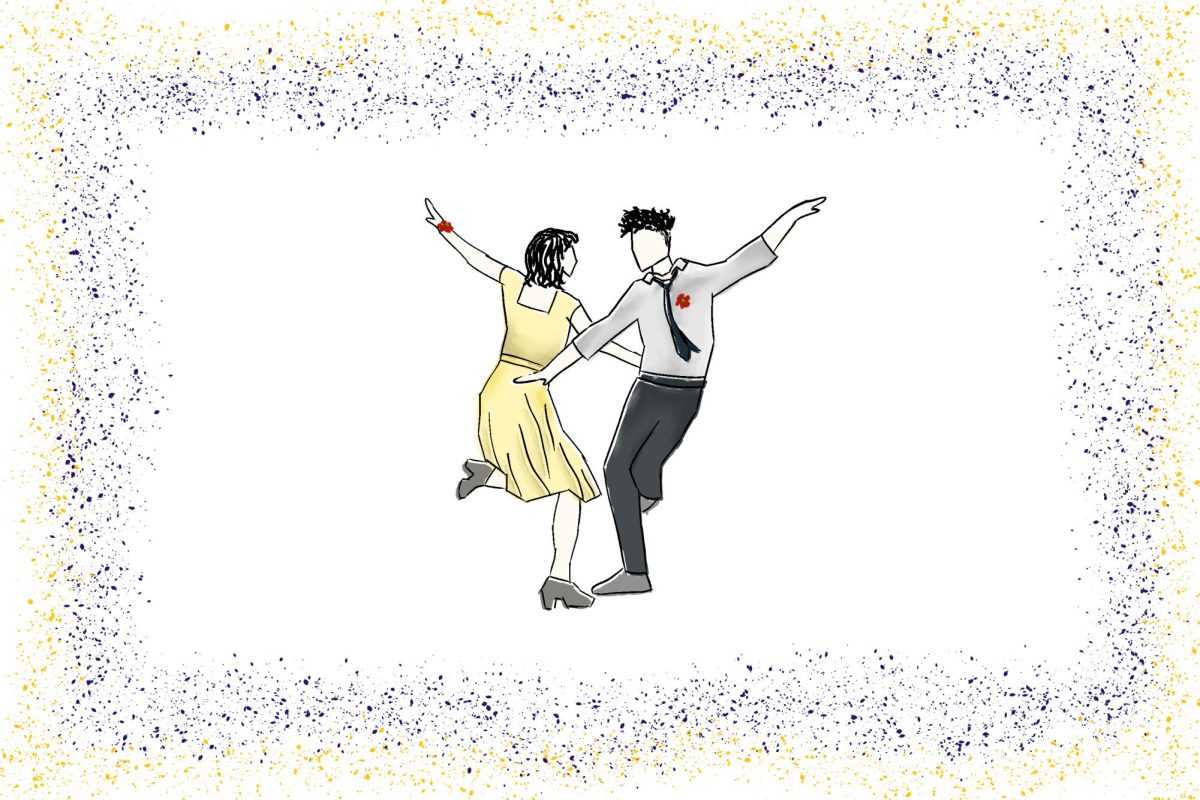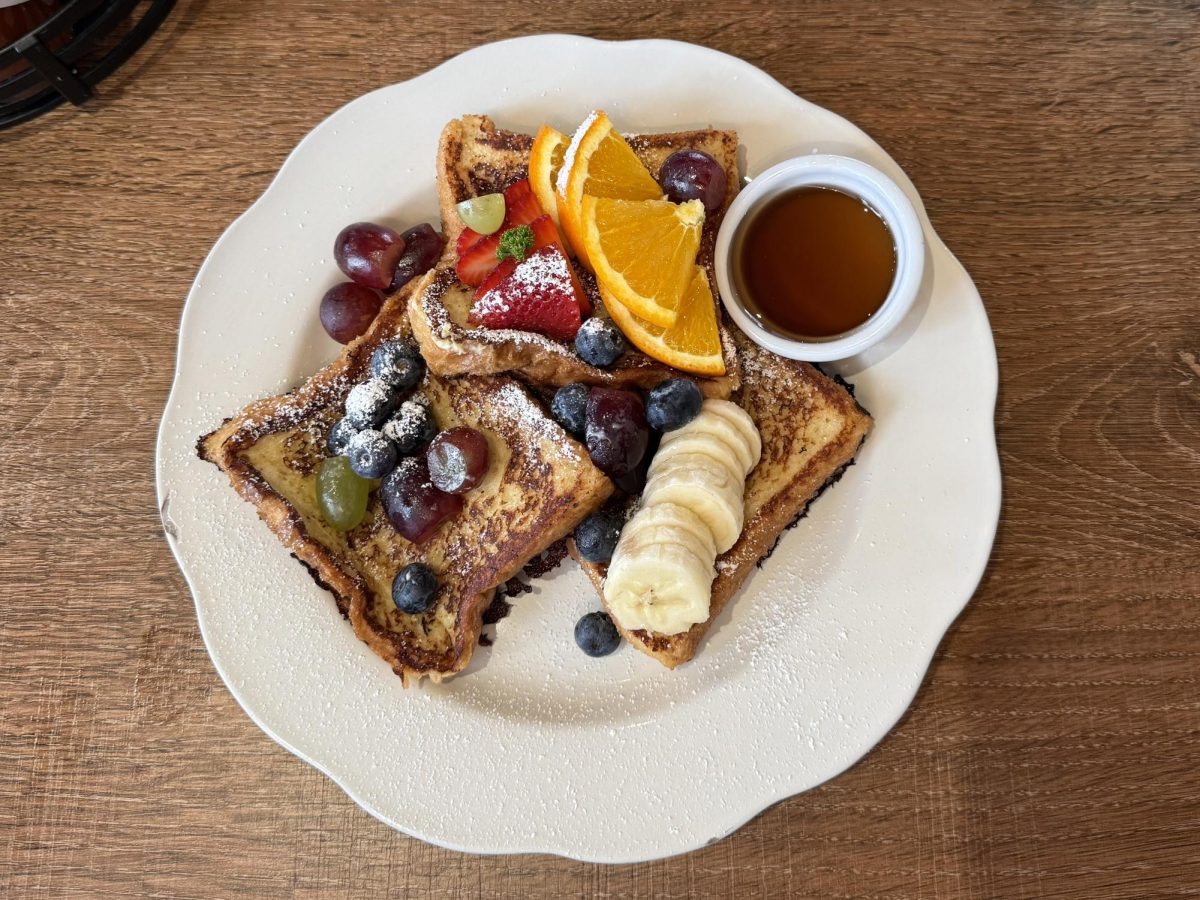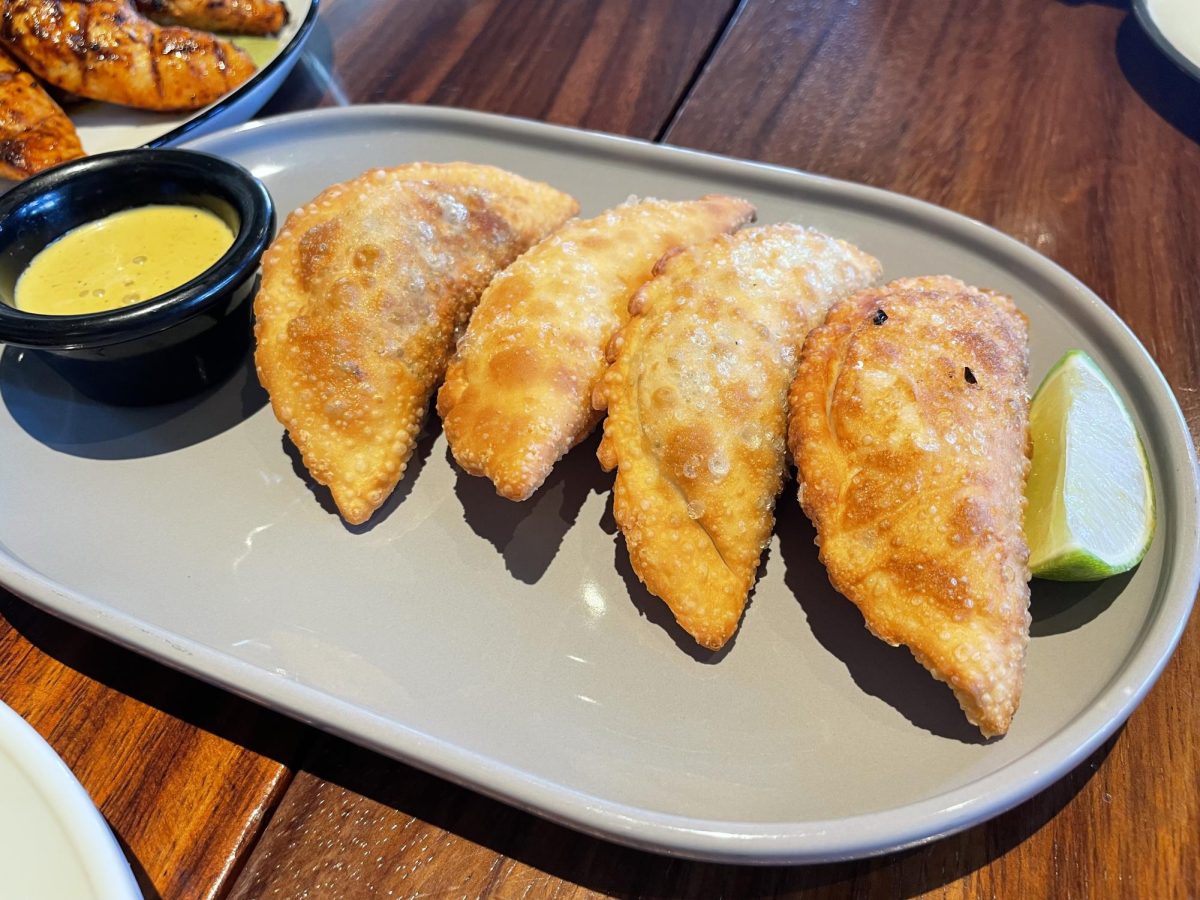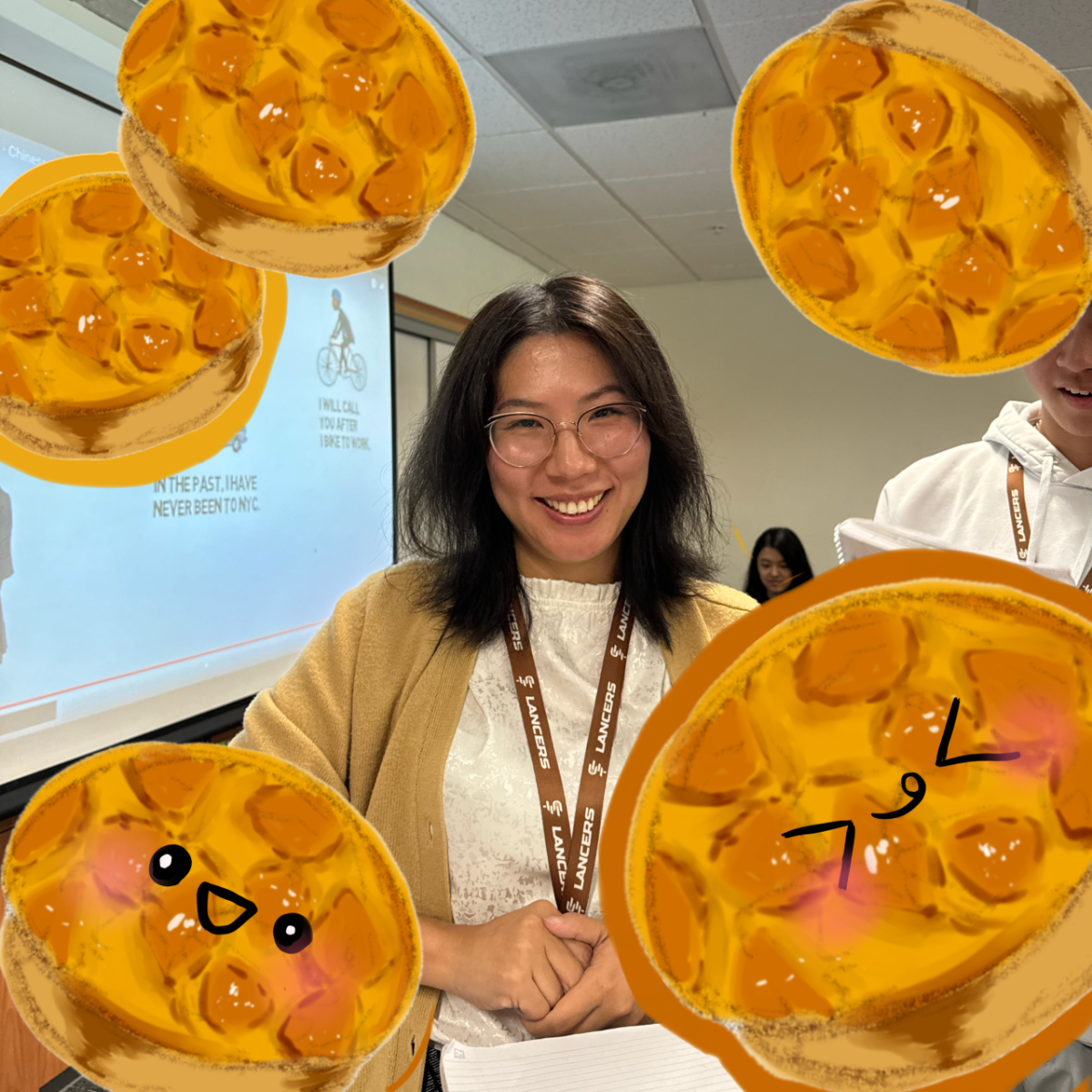Mr. Quinn’s reputation as a passionate chef precedes him. My friends who have had him as their English teacher have told me how he is an avid appreciator of cuisines from around the world, and that they love hearing his latest cooking stories. As such, when I reached out to Mr. Quinn and asked him if he’d like to participate, he quickly shared the dish chicken saltimbocca.
At first, I was unfamiliar with chicken saltimbocca, but I quickly learned that it is an especially popular dish served in Italian restaurants everywhere. The dish’s name itself indicates its delicious flavors, as saltimbocca loosely translates to the Italian phrase “it jumps in the mouth.” The recipe generally consists of pan seared chicken breast wrapped in crispy prosciutto and simmered in a sage white-wine reduction. However, every restaurant prepares their own version; some chefs add provolone or mushrooms, and popular side dishes include roasted asparagus, sautéed spinach, pasta, or risotto.
The history behind chicken saltimbocca comes from the more traditional saltimbocca Alla Romana, made with veal cutlets covered in prosciutto and sage. Like classic staples, there are many theories about the origin of saltimbocca. Saltimbocca alla Romana has long been attributed to Rome, but recent historians have developed the theory that saltimbocca may have originated in Brescia, an Italian alpine town along the Swiss border. The recipe was first printed in 1891, in Pellegrino Artusi’s La Scienza in Cucina e l’Arte di Mangiar Bene, an almost 800-page cookbook which helped spread the dish to hundreds of homes. When Italian immigrants arrived in the US, they substituted the expensive veal for chicken, which was more affordable.
After gathering all the necessary ingredients, I began my first attempt at making chicken saltimbocca. I started by cutting the chicken breasts into thinner pieces, seasoning them with salt and pepper, and using the meat tenderizer to ensure the chicken had the ideal thickness. I then wrapped the chicken in prosciutto strips and placed each chicken breast into a hot pan with olive oil and sage leaves. While I was pan searing the chicken, the prosciutto crisped up nicely; after the chicken was fully cooked, I transferred the pieces onto a plate.
Now it was time to make the herb-filled sauce, which is the main feature of chicken saltimbocca. Keeping the leftover prosciutto bits in the pan, I added garlic, shallots, parsley, sage, and some butter. When the shallots started looking translucent and the garlic was golden-brown, I added the white wine and chicken broth. I let the sauce simmer for about 15 minutes before taking it off the heat.
Because Mr. Quinn was going to be tasting the dish the following day during lunch, I stored the chicken and the sauce in the fridge separately. In the morning, I placed the chicken in the pan with the reduction and let the chicken simmer in the sauce for another 10 minutes, flipping sides when necessary. I also prepared some penne pasta as the side, and after a drizzle of olive oil, I added the chicken and some of the sauce on top.
When I met Mr. Quinn in the Campus Ministry room, I was a little nervous about reheating the chicken in the microwave as I thought it would lose its moisture and perhaps become overcooked. So, I was relieved when Mr. Quinn said the chicken was “spot on” and that the flavor was “stellar.” After I asked what I could improve on, he recommended I put a sage leaf on the chicken before wrapping it in prosciutto, so that the sage flavor adheres to the chicken as well.
I genuinely enjoyed chatting with a fellow foodie, especially as Mr. Quinn gave me valuable advice for my future cooking endeavors. He turned out to be a chicken broth connoisseur, who lets his homemade chicken broth simmer for 24 hours to extract the maximum flavor out of leftover chicken meat and bones: “It makes such a difference. Simmering it for so long extracts all the collagen which adds so much richness to any sauce. It’s also really good for you.”
To finish the taste-test session, I asked Mr. Quinn why he chose chicken saltimbocca. “It’s one of my favorite recipes to cook at home,” he said. I have to agree; though it may seem daunting at first, the steps are fairly easy and the ingredients can be easily found. The short preparation time required and endless opportunities for customization make chicken saltimbocca the perfect weekday meal.








































































